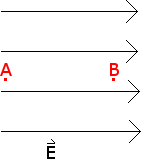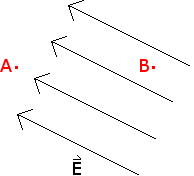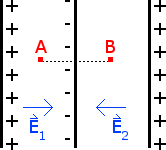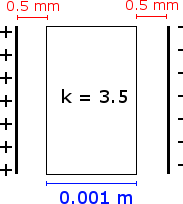Electric Field Potential
A very long thin wire carries a line charge density, = 361.0 . Find the electric potential difference between points 3.0 m and 6.0 m on a perpendicular radius to the axis of the wire, provided the perpendicular radius is not near either end of the wire. (this problem requires calculus)
Related Problems
Points A and B are in a region of uniform electric field, = < 65, 0 > N/C. Point A is at < -0.1, 0 > and Point B is at < 0.7, 0 >. Find the electron potential difference between point A and B.

Points A and B are in a region of uniform electric field, = < -85, 25 > N/C. Point A is at < -0.5, 0 > and Point B is at < 0.7, 0 >. Find the electron potential difference between point A and B.

The figure below shows two capacitors. The capacitor on the left has a uniform electric field, = < 535, 0 > N/C. The capacitor on the right has a uniform electric field, = < -225, 0 > N/C. If we define the point directly between A and B to be the origin, then point A is at < -0.4 , 0 > and point B is at < 0.4, 0 >. Find the potential drop on the path from A to B. If a proton traveled from rest at point A to point B, what would be its kinetic energy at point B?

The capacitor below has a potential difference of 1010 V before an insulator is placed inside. The insulator placed inside has a diaelectric constant of k = 3.5. Find the electric potential difference across the capacitor with the insulator inside.
